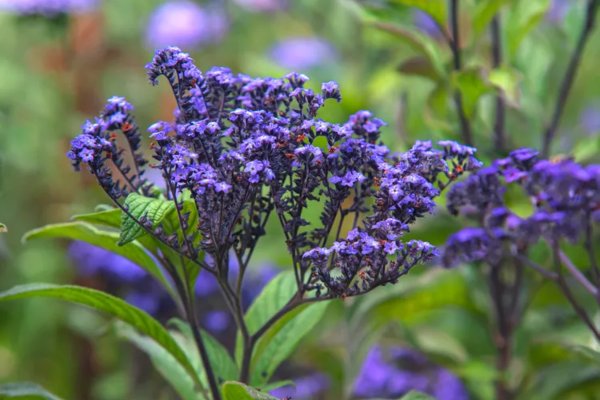The heliotrope flower comes from flowering plants in the Boraginaceae family which has around 325 species. They are beautiful flowering perennials and are popular for their aromatic and delicate old cottage-garden-style flowers. Heliotrope blooms are small flowers that grow in clusters that follow the sun. That is where they got their name which is directly derived from the Greek words helios (meaning ‘sun) and tropos (meaning ‘to turn’). While some gardeners describe the scent of the flowers as vanilla, others claim they smell like cherry pie. It is best to plant fast-growing heliotropes outdoors in the spring after the danger of frost is gone. This plant is toxic to both pets and humans. Know how to grow these elegant perennials in your garden.
Plant Attributes
- Common Name: Heliotropes, cherry pie plant
- Botanical Name: Heliotropium
- Family: Boraginaceae
- Plant Type: Perennial
- Mature Size: 1-4 ft. tall, 6-8 in. wide
- Sun Exposure: Full
- Soil Type: Well-draining
- Soil pH: Neutral
- Bloom Time: Summer, Fall
- Flower Color: White, purple
- Hardiness Zones: 9-11 (USDA)
- Native Area: South America
- Toxicity: Toxic to humans and animals
Also, Read Deer-resistant Annuals: Colorful Plants for Sun and Shade
Heliotropes Care
Heliotropes are temperate perennials and are origins of the subtropical regions of Peru. If grown out of their native scale, these plants are normally grown annually as they are half-hardy and do not like frost. They are considered low- to medium-maintenance plants that can do well from some regular care.
Light
Heliotropes are sun-loving plants that need at least six hours a day of direct sunlight. Having said that, these plants prefer the morning sun and during summer, the harsh afternoon sun may harm their delicate flowers. So, it is recommended to place your heliotropes in a place that receives bright morning sunlight, and light shade in the afternoon is beneficial.
Soil
Heliotropes thrive in rich, loamy soil that is well-draining but takes in moisture. They prefer soil that is rich in organic matter and contains a pH between 6.6 and 7.3. Since heliotropes can not tolerate wet feet, they do not do well in heavy clay soils.
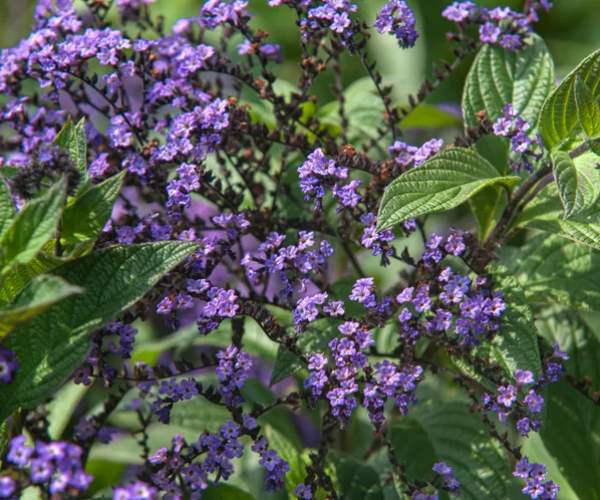
Water
These plants love water and need a lot of it to thrive. Remember to keep the soil evenly moist but not too wet. However, do not let the plant to dry out. If you’re growing them in pots, water them more often as the plants absorb water more quickly.
Temperature and humidity
Heliotropes grow well in climates with warmer days and cooler nights. They hate overly hot or humid weather and also the ones that are highly frost-tender.
Fertilizer
Heliotropes are heavy feeders and need fertilizing regularly throughout their growing season. If you have them in your garden, fertilize them at least once a month, and if you are growing them in a container, fertilize them as often as every other two weeks. If you’re confused about which fertilizer to use, choose the one high in phosphorus that is meant for flowering plants. For the amount to use, follow product label instructions.
Types of Heliotropes
There are many different varieties and cultivars of heliotropes. Some of them are:
- ‘ Princess Marina’ (Heliotropium arborescens): This heliotrope type is a compact one but it is the quintessential cherry pie-scented version which has violet-purple blooms, growing just 6 to 12 inches tall.
- Clasping heliotrope (Heliotropium amplexicaule): This is also called blue or summer heliotrope because it produces tiny bright purple flower clusters that attract pollinators.
- Beach heliotrope (Heliotropium anomalum): This pretty ground-covering type of plant is native to Hawaii and has silvery skinny leaf clusters that shoot up fragrant white flower clusters.
- Salt heliotrope (Heliotropium curassavicum): This aggressive plant is also commonly known as seaside heliotrope as it does well in wet or dry and salty soils and produces white blooms with yellow and purple throats.
How to propagate Heliotropes
Heliotropes can be propagated using cuttings or seeds. The best time to propagate the stem cuttings is in the spring and summer. Follow these steps:
- Take 4- to 5-inch stem cuttings from an outdoor heliotrope plant that’s healthy and green.
- Remove the leaves from the bottom half of the cutting and dip them in the rooting hormone if you want.
- Put the cutting in a pot of moistened soil.
- Keep the pot on a slab with bright, indirect light. Avoid direct sunlight or the young plant can become scorched while trying to root.
- Keep the cuttings moist.
- After a few weeks, you will notice that the cuttings are rooting. Then gradually bring the pots into brighter and more direct sunlight. Keep the cuttings overwintered indoors.
- Transplant outdoors or into a container garden in the spring.
Grow Heliotropes from seeds
Growing these plants from seed can be the easiest and most famous way of growing these perennials. It should start indoors 10 to 12 weeks before the last frost to make sure that the plants have some time to bloom before the fall’s first frost. These seeds should be kept at a temperature between 70 to 75 degrees Fahrenheit and should germinate within 28 to 42 days. Once the frost has gone, transplant the seedlings into the garden or a container outdoors.
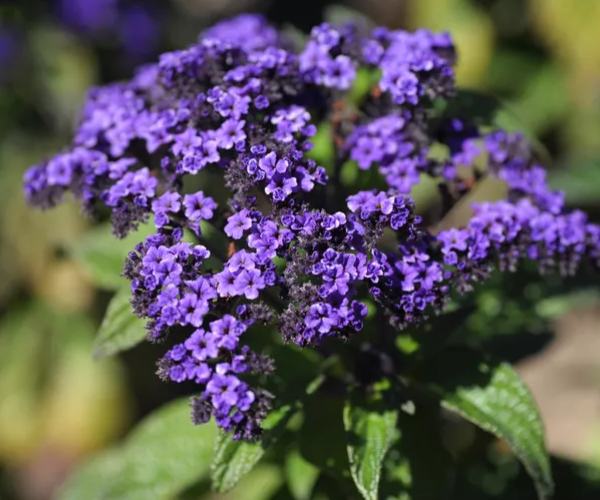
Overwintering
If you’re growing heliotropes in containers, it means they can easily be overwintered if desired. Be mindful of bringing the plant indoors before the first frost. Keep the container in a cool room on a sill that gets bright, indirect sunlight that will not burn the plant. Water in small amounts regularly to prevent the plant from drying out. Do not keep the plants near a heat source or risk dry soil. When spring arrives bring back in the spring when the temperatures rise gradually over 55 degrees Fahrenheit.
Common pests and plant diseases
Heliotropes may get infested by aphids, mealybugs, spider mites, fungus gnats, and whiteflies. You can control the infestation with insecticidal soap or neem oil. This plant is not susceptible to many diseases but you must keep an eye out for fungal problems like powdery mildew, which occurs when air circulation is bad and soil is very warm.
How to get Heliotropes to Bloom
If you pinch and deadhead your outdoor heliotropes regularly, it will encourage more consistent blooming and a bushier, more healthy growth habit. You can start by pinching back the stems and flowers in the early spring to enjoy better growth. Don’t be discouraged if this delays the initial bloom because you will be rewarded with larger and more attractive blooms throughout the rest of the season. If you’re growing one indoors, it might have a tougher time blooming so make sure you’re giving it proper care like it’s moist enough, fertilized, and receives enough good light.
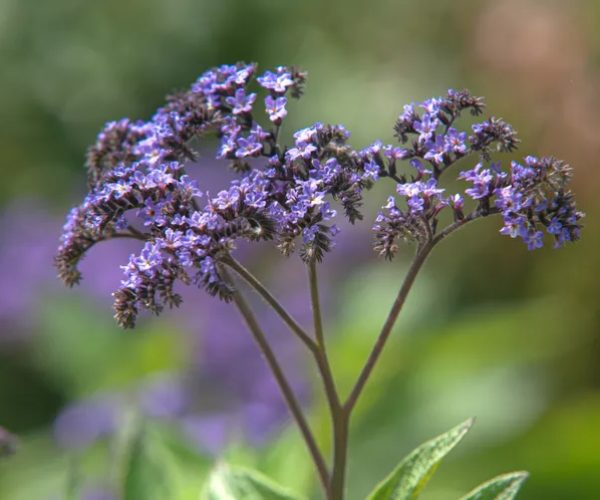
Some common problems with heliotropes
Whether you grow heliotropes indoors or outdoors, there are not many problems so you have to watch for these issues.
Brown Flower Clusters
You may face conditions favorable to powdery mildew. Remember to remove damaged flowers to encourage further blooms. Water the soil regularly to prevent it from drying but do not overwater.
General Drooping
A droopy heliotrope could mean it’s stressed maybe it received too much sunlight or it’s overwatered. Though the plant prefers some dry side, it doesn’t like feeling scorched, parched, or soggy.
Discolored or Brown Leaves
If you notice brown leaves, check if your heliotropes are spider mite-infested as they suck moisture out of the leaves. They can be detected by their white webs forming on the undersides of the leaves. Sap-sucking whiteflies could be another enemy and the naked eye can easily see them. You can eliminate these pests with the help of insecticidal soap on pest infestations. Brown leaves also indicate that the plant is receiving too much water.
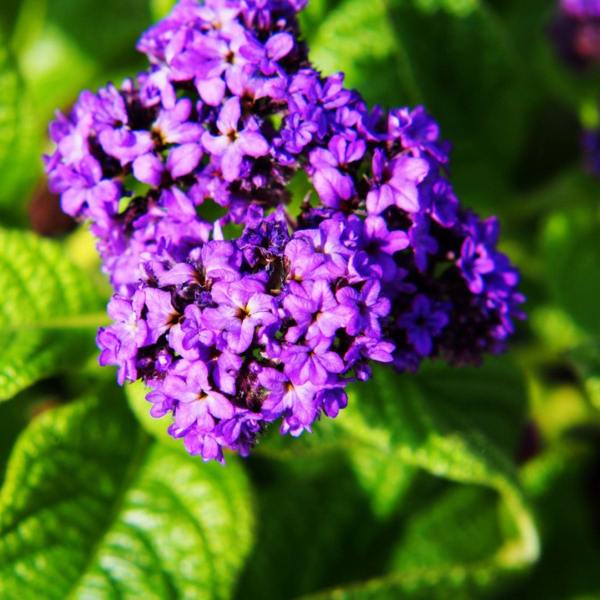
FAQs
Q: What is heliotrope good for?
A: Heliotrope is lovely as a fragrant garden border, grown in window boxes, or cascading over the edge of hanging baskets.
Q: Is heliotrope a good houseplant?
A: Heliotropes are great indoor houseplants and pot plants because they are small. But remember they are toxic to humans and animals.
Q: What does heliotrope smell like?
A: It depends on every nose. Some say these plants smell like almonds while some say vanilla or cherry pie.
Also, Read 20 Plants That Thrive in Dry Conditions for Sandy Soil
